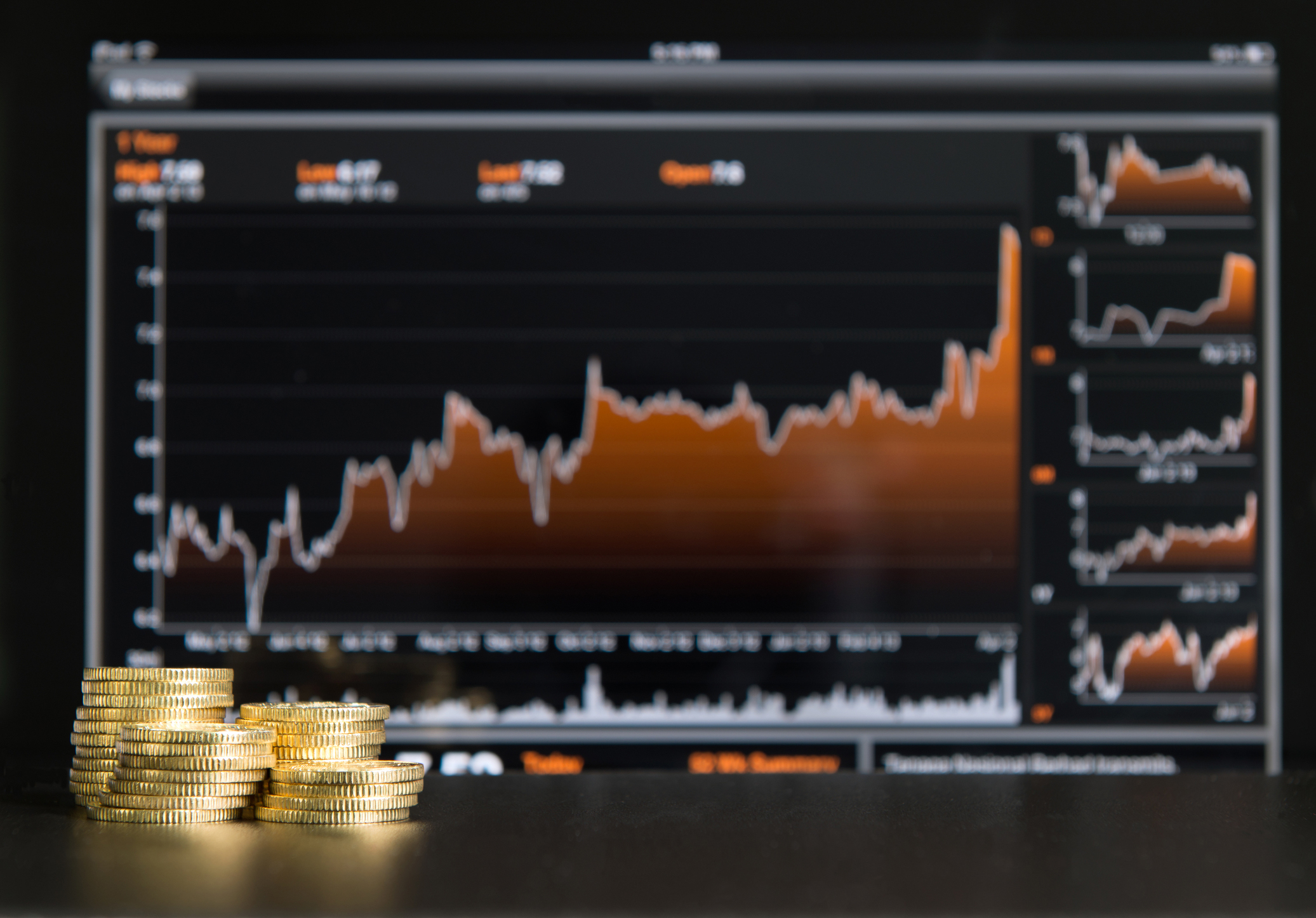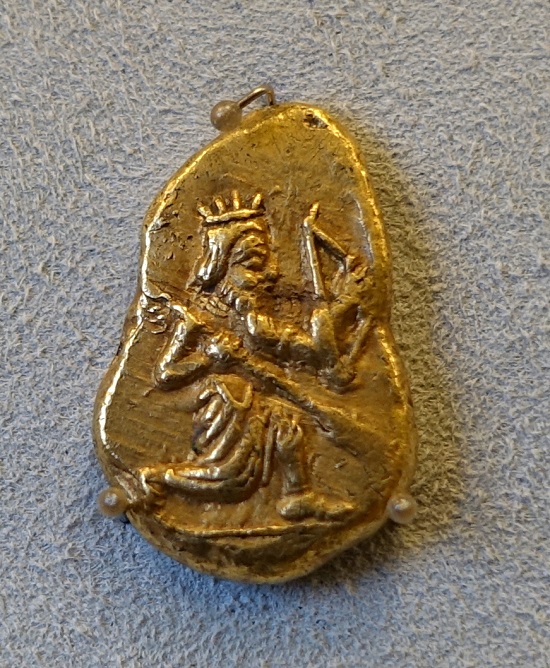History Of Gold: Lessons To Learn For Investors
03/10/2023Daniel Fisher
Free & fully insured UK Delivery. Learn more
Secure & flexible payments. Learn more

Buyback Guarantee Learn more
Bringing your attention to the history of gold can provide valuable lessons that are highly relevant even today. With economic and geopolitical uncertainty on the rise, many investors are looking to this precious metal to stabilise their portfolios.
Looking at the history and past trends of precious metals like gold can help us understand what we can do better now and in the future. All the way from the times of the Aztecs, ancient Egypt, and Chinese dynasties, there have been many events that showed us how gold investing and financial markets change under different circumstances.
Focusing on the history of gold investments can help you to make the most of your portfolio and future-proof your ventures.
While gold’s value has fluctuated over the centuries, studying its historical performance offers quick wins and immediate lessons for investors today. By understanding gold’s endurance as a long-term store of value, its effectiveness as a safe haven asset during economic crises, and the importance of flexibility as markets shift, UK investors can make strategic allocations to gold as part of a balanced portfolio.
Gold is perhaps the most popular commodity of all history.
Unlike fiat currencies susceptible to inflationary declines, gold’s limited supply and production costs help it hold a relatively steady worth over the long run.
This makes gold attractive for investors with longer time horizons of 5-10 years, providing stability amid economic cycles. When considered a small allocation of 5-10% of a portfolio, gold can anchor against inflation, market volatility, and currency devaluation over decades.
Throughout modern history, gold has reliably served investors as a hedge against market downturns, geopolitical crises, and currency devaluations.
In times of fear or uncertainty that drove investors to safety, demand for gold consistently rises as a safe haven asset.
Today, gold is typically purchased as a hedge against inflation, and its price has often been known to rise during times of economic crisis. A strategic allocation to gold can help weather short-term storms.
There is scarcely a culture or era where gold has not been highly valued. From the gold death masks of ancient Egyptian pharaohs to the Aztec’s use of gold in religious ceremonies, this precious metal has been a symbol of power and wealth. In ancient China, gold ingots were used as a form of currency, and during the various dynasties, gold was a key element in art and decoration. The Grecian and Roman empires amassed vast treasure hoards of gold, which were both a display of wealth and a practical reserve for times of crisis.
Gold also played a pivotal role in shaping the global economy. For instance, the Spanish conquest of the Americas was largely driven by the quest for gold, and the influx of New World gold into Europe had a profound impact on global trade and the development of capitalism. In the 19th century, the Gold Standard became the backbone of international finance, linking major global currencies to a fixed quantity of gold. This system provided stability but was eventually abandoned in the 20th century, most notably by President Richard Nixon in 1971, leading to the modern fiat currency system.
Without gold, the development of a stable monetary standard would have been far more challenging, and the prosperity of global trade would have been harder to sustain. Its enduring value has made it a cornerstone in the financial systems of cultures worldwide, from ancient civilisations to modern economies.
Gold has been a part of our economy since the Ancient World.

The gold standard era underscores the importance of adaptability and flexibility as an investor.
As the monetary system based on gold convertibility rose and eventually fell between the 19th and 20th centuries, investors who failed to adjust their strategies suffered.
Remembering this period reminds today’s investors that markets evolve and no one system lasts forever.
The gold standard linked major global currencies to gold, with central banks standing ready to buy and sell gold bullion at a fixed price. The United States Congress passed the Mint and Coinage Act in 1792.
This act put in place a fixed price of gold with parity to the US Dollar. Eventually, in 1873, silver was removed altogether from the US Mint’s fixed rate system, and a bill called the Coinage Act of 1873 was passed to officially remove silver dollars from the US monetary system.
This system rose to prominence in the late 19th century, temporarily collapsed during WWI, and then returned in a modified form until being completely abandoned by Nixon in 1971.
For investors, the main lessons of the gold standard era are that monetary systems are not permanent and markets are constantly evolving. Savvy investors stay flexible and adaptive.
The gold standard’s rise and fall underscores the need for adaptability as an investor. When Britain suspended gold convertibility at the outbreak of WWI in 1914, investors who failed to adjust their portfolio strategy suffered as markets descended into chaos.
In 1971, President Richard Nixon abruptly closed the ‘gold window,’ ending the U.S. dollar’s convertibility to gold and effectively dismantling the Bretton Woods system. This decision was driven by economic pressures like rising inflation, unemployment, and dwindling gold reserves. The move caught investors off guard and led to a surge in gold prices, as the metal was now valued by market forces rather than a fixed dollar amount. The event also introduced a new era of currency volatility, giving rise to modern foreign exchange markets. For investors, the ‘Nixon Shock‘ serves as a lesson in the importance of adaptability and preparedness for sudden market shifts
Investors should be prepared to rebalance their holdings and even rethink long-held monetary assumptions when paradigm shifts occur.

The 1970s gold boom that saw prices skyrocket and then crash offers critical lessons for investors about avoiding speculation. The euphoria, mania, and ultimate bust of this period remind today’s investors to focus on fundamentals over-hype when allocating to gold.
Gold purchased as an investment really only took off after the 1970s when The United States once again made it legal to own and trade in physical gold.
The 1970s saw gold prices skyrocket from $35/oz to an astounding high of over $800/oz by 1980, fueled by high inflation fears and speculative fever.
But this meteoric rise was followed by a brutal multi-decade bear market, with prices plunging back below $300/oz by the 2000s.
For investors, the key lessons of this period are to exercise caution when prices detach from fundamentals and avoid getting swept up in speculative bubbles.
The 1970s gold mania holds important cautions for investors about the perils of buying into speculative frenzies and manias fed by herd mentality, just like with the cryptocurrency boom followed by the Bitcoin crash in 2017. Starting around 2017, Bitcoin and other cryptocurrencies experienced a meteoric rise, fueled by speculative investment and a herd mentality similar to the gold mania of the 1970s. At the end of 2017, Bitcoin’s price nearly reached $20,000, only to crash dramatically in the following months, wiping out billions in market value.
Caught up in the excitement as gold prices seemed to rise indefinitely, individual investors poured money into gold, helping drive prices to dizzying heights unsupported by supply and demand fundamentals. Yet without a firm basis, this speculative gold bubble inevitably popped. When sentiment shifted, many late-stage speculators lost fortunes.
This period demonstrates why savvy investors focus on objective fundamentals rather than following the crowd when making allocation decisions.
Use our automated portfolio builder to get suggestions based on various investment objectives, including tax efficiency.
Gold’s consistent ability to withstand and even thrive during historical periods of economic crisis and market turmoil underscores its effectiveness as a portfolio risk management tool.
Studying gold’s performance during major crises allows today’s investors to utilise gold to hedge against inevitable bouts of fear and uncertainty.
Throughout modern history, gold has performed well during economic contraction, market crashes, and currency devaluations.
This includes appreciation in value during the Great Depression in the 1930s when the price rose by 60 % to $35, devaluing the American currency and raising inflation, the 1970s stagflation crisis when the world witnessed a massive increase of 2,300% in the gold’s value, the 2008 global financial crisis when the gold’s price jumped up by nearly $90 per ounce, and the 2020 COVID-19 pandemic recession that made the gold price climb up by 34%.
After the Second World War, the US dollar became the main currency held by other governments as it was the only currency still backed by gold.
The fact that the U.S. dollar was backed by gold after WWII and became the main currency held by other governments underscores the deep-seated trust in gold as a stable store of value. This arrangement, known as the Bretton Woods system, provided a level of global economic stability and facilitated international trade. When the U.S. abandoned the gold standard in 1973, it marked a significant shift, but the intrinsic value of gold remained.
This continued up until 1973, when America became the last country to cease using the gold standard. Even as other assets declined sharply, investors could rely on gold to mitigate losses.
In a wider context, this historical episode highlights the enduring role of gold as a trusted asset, especially in times of economic uncertainty or instability. While fiat currencies like the dollar can be subject to inflation and devaluation, gold has historically maintained its value. This is why many investors turn to gold as a “safe haven” asset during economic downturns or periods of high inflation.

Gold’s strong performance during diverse periods of economic crisis underscores its effectiveness as a risk management asset and portfolio diversifier.
The frequent crises throughout history serve as reminders that recessions, crashes, and market turmoil are inevitable cycles investors must navigate.
Wise UK investors allocate a small strategic portion, around 5-10%, of their portfolio to gold. This provides an anchor of stability and downside protection during market stresses when fear drives a flight to safety.
Gold’s ability to hold its value during significant inflationary periods throughout history highlights its effectiveness as an inflation hedge.
This lesson takes on new urgency given the current high inflation.
As a commodity and a currency, the history of gold investment is complex and relatively modern. Whilst accumulating wealth (and investing) is not a new human proclivity, the mechanisms for a standard benchmark of gold pricing relative to paper currency only emerged in the last few centuries. As a real asset with limited supply and production costs, gold has tended to hold its value well over the long term, even in high inflation environments that can erode cash savings and bond returns. This includes retaining purchasing power during the severe 1970s stagflation era and even hyperinflationary periods like Weimar Germany. While gold’s nominal price may be volatile, its inflation-adjusted value demonstrates resilience.
Gold’s consistent ability to preserve purchasing power against rising prices throughout many past inflationary periods underscores its effectiveness as an inflation hedge. With inflation recently reaching 40-year highs, this lesson is particularly timely for UK investors aiming to protect their money’s worth. A strategic gold allocation can provide a buffer against the erosive effects of inflation, which can be difficult to avoid entirely in an investment portfolio.
While the future path of gold cannot be predicted with certainty, investors who learn from historical cycles and remain adaptable will be best equipped to benefit from gold investment going forward.
Gold has moved through clear boom and bust cycles throughout modern history while maintaining its core role as a store of value and hedge against crisis.
Economic conditions, investor psychology, monetary policy, and technological changes will likely continue driving gold through bull and bear markets.
Looking forward, responsible gold investment guided by history can help UK investors prudently prepare for an uncertain future.
The long history of gold underscores the wisdom of continually learning about gold fundamentals and adapting strategies based on where it is in the cycle. Investors who study historical bull and bear trends, understand the key drivers behind them, and adjust their allocations accordingly will be best positioned to benefit from gold’s next upswing.
They will also avoid missteps like undisciplined speculation, ignoring fundamentals, and overexposure at the wrong time. With education and adaptability, gold investors can draw on the past to navigate the future.

Gold’s fortunes have fluctuated throughout history as monetary systems, economic conditions, technology, geopolitics, and investor sentiment shifted over time. Gold usage as a tool for bartering and trading has been prevalent throughout history.
It was first used as a form of currency back in 500 BC, when Darius the Great, ruler of the Persian Empire, minted the very first gold coin, known as the “daric”. Savvy gold investors stay up-to-date on all factors influencing supply and demand as well as relevant monetary policies when considering allocation.
Being nimble and adaptive allowed past investors to capitalise on cyclical gold upswings and protect against downturns. Knowledge and flexibility will be key for investors as gold markets evolve in the 21st century.
As you can see, the history of gold investment brings many lessons into the present and future. Studying gold’s performance and drivers during major economic shifts, technological innovations, speculative manias, and crises can help you gain wisdom to navigate markets going forward.
As gold markets continue evolving in the 21st century, investors who apply insights from the past will have an advantage. Gold’s expansive history illustrates that education and flexibility are the cornerstones of successful gold investment decisions. Once you combine a strong understanding of historical trends, cycles, and performance drivers with the discipline to adapt allocations as fundamentals shift, you’ll be able to leverage gold to protect and grow wealth. In the end, gold can provide investors with an anchor of value to navigate inevitable volatility ahead when you’re using.
Physical Gold offers a wide range of gold based investments. You may be interested in VAT-free gold bars in a number of sizes including 1oz, 100g, and 1 kilo. Or you may be after tax-free gold coins in various denominations and designs. To speak to one of our experienced brokers or to find out more information on any of our product ranges please contact us on 020 7060 9992.
Even though you might be a pro in the gold’s history and understand the lessons we can learn from the past, you might still have some questions. Here are some of the questions we often get from investors like you:
Yes, gold has proven itself a good long-term investment throughout history, with the ability to preserve wealth and purchasing power. When allocated prudently as part of a diversified portfolio, gold provides stable returns, inflation hedging, and downside protection during crises. Past performance does not guarantee future results, but gold’s historical role is likely to persist.
Gold has been traded and used as money for over 6000 years. Some key events in the history of gold trading include early gold coins in Lydia around 560 BC, Chinese gold trading in the 10th century BC, the establishment of gold futures markets in the 1970s, and the creation of the first gold-backed ETF in 2003.
Based on historical data, the compound annual growth rate of gold over the last 50 years is approximately 10-11%. However, returns have varied significantly depending on the time period and gold cycle. This highlights the need for a long-term investment horizon when allocating to gold.
Throughout history, people have invested in gold for wealth preservation, inflation hedging, crisis protection, and portfolio diversification. Gold’s physical properties, scarcity, and role as money have made it universally valued across cultures and economic systems over thousands of years.
Live Gold Spot Price in Sterling. Gold is one of the densest of all metals. It is a good conductor of heat and electricity. It is also soft and the most malleable and ductile of the elements; an ounce (31.1 grams; gold is weighed in troy ounces) can be beaten out to 187 square feet (about 17 square metres) in extremely thin sheets called gold leaf.
Live Silver Spot Price in Sterling. Silver (Ag), chemical element, a white lustrous metal valued for its decorative beauty and electrical conductivity. Silver is located in Group 11 (Ib) and Period 5 of the periodic table, between copper (Period 4) and gold (Period 6), and its physical and chemical properties are intermediate between those two metals.